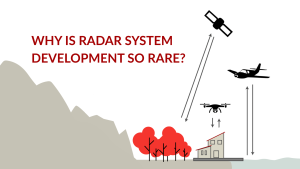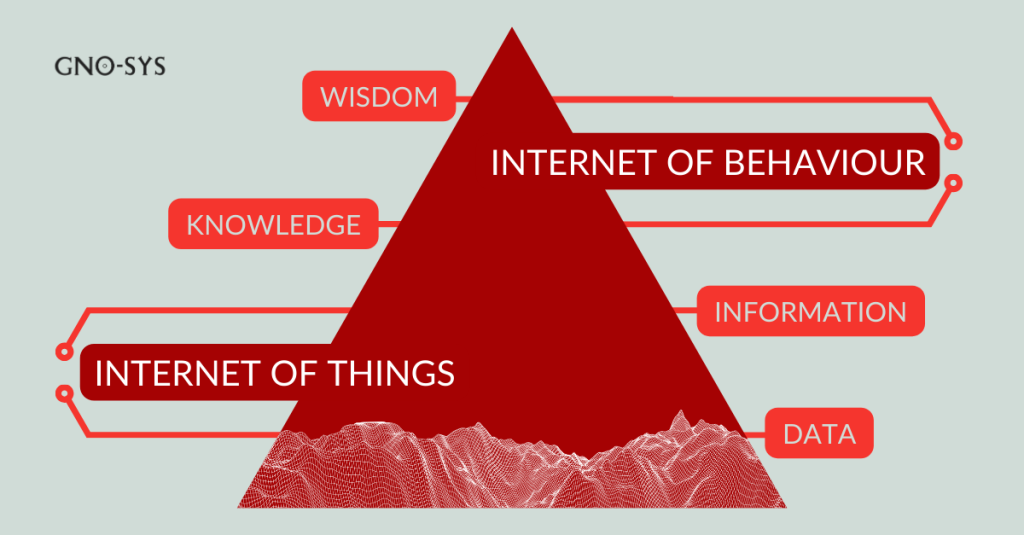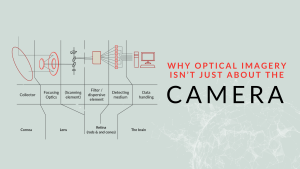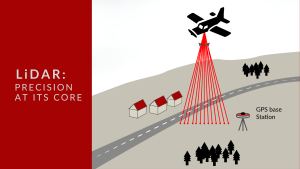
Mapping with Radar: Why So Few Can Do What We Do
Radar has earned a reputation in remote sensing for being among the most powerful and complex technologies to work with. While satellite radar systems have

Have you ever wondered how much your location data can tell about your daily habits? With the increasing adoption of Internet of Things (IoT) devices, this data is becoming a goldmine for understanding human behavior. In fact, a report predicts that by 2030, 75% of all devices will be IoT devices. Welcome to the era of the ‘Internet of Behaviour’ (IoB), where geospatial technology is taking center stage.
We live in a world where our devices constantly talk to each other. From smartwatches tracking our fitness to home assistants managing our schedules, the Internet of Things (IoT) is deeply embedded in our daily lives. But, it’s not just about the gadgets anymore. It’s about what these devices can tell us about ourselves. This is where the ‘Internet of Behaviour’ comes in.
The IoB goes beyond just tracking ‘things.’ It’s about understanding the behaviors behind the data. Big tech companies have long used personal data to create detailed profiles of users. Just like we layer information onto a map when creating a Digital Terrain Model (DTM), we can layer behavioral trends to gain valuable insights so organizations can make informed decisions.
Simply put, location intelligence is the process of deriving meaningful insights from geospatial data. This can include anything from the places you visit to the routes you take. By analyzing this data, companies can gain a better understanding of consumer behavior and preferences.
Imagine you frequent a particular coffee shop every morning. Location intelligence can help businesses like that coffee shop understand peak hours, popular products, and demographics. For consumers, this could mean better, more personalized services, and for organizations, this could mean less risk and optimized resource allocation.

The rise of behavioral insights has opened new avenues and markets for the remote sensing industry. The additional insights allow companies like us to help our clients find more value in their data. This can also help organizations understand the behaviors and needs of different client segments, and allocate resources more efficiently. This includes optimizing flight paths, sensor usage, and data processing resources to maximize the value delivered to clients.
By analyzing behavioral data across various industries, remote sensing companies can identify specific needs and tailor their solutions to meet these requirements. For example, agriculture companies might need detailed plant health data at specific intervals throughout the seasons. The trend patterns for data collection and analysis can then be automated, lifting the organizational burden from the client.
IoB can provide insights into the operational behaviors of industries that rely on remote sensing. This data can help develop predictive maintenance schedules for infrastructure such as pipelines, bridges, and power lines. By offering services that prevent failures and reduce downtime, remote sensing companies can open new markets in infrastructure management.
Behavioral data from sectors like conservation and resource management can highlight the need for more sophisticated environmental monitoring. Remote sensing companies can develop specialized services for tracking wildlife movements, deforestation, and water quality.
Behavioral data during and after natural disasters can be critical for emergency response. Remote sensing companies can develop real-time monitoring and predictive modeling services to aid in disaster preparedness and response, opening new markets with government agencies and NGOs.

Location intelligence and the Internet of Behaviour are revolutionizing how businesses interact with customers. By collecting and analyzing data from connected devices, companies can gain a deep understanding of human behavior. This not only improves products and services but also personalizes marketing efforts in ways we’ve never seen before.
With the increasing use of mobile devices and social media, the role of location intelligence and IoB in B2B is set to expand significantly. The future holds exciting possibilities for creating innovative products and services that meet the specific needs of businesses and their clients. Ensuring data is used ethically and privacy is protected will be crucial as these technologies evolve.
In the data-driven world we live in, the function of IoT, location intelligence, and the Internet of Behaviour is opening new frontiers in B2B industries. It’s about more than just tracking where we go. It’s about understanding why we go there and what we do. This deeper understanding has the potential to change industries, improve services, and create a more connected and efficient business environment

Radar has earned a reputation in remote sensing for being among the most powerful and complex technologies to work with. While satellite radar systems have

When we set out to develop a high-performance optical imaging system, we start where many do – testing commercial off-the-shelf cameras. The idea was simple:

At GNO-SYS, we specialize in engineering LiDAR systems that deliver precise distance measurement and topographic mapping. Currently, our team is engaged in an exciting project to develop a custom LiDAR system tailored for a specialized application.